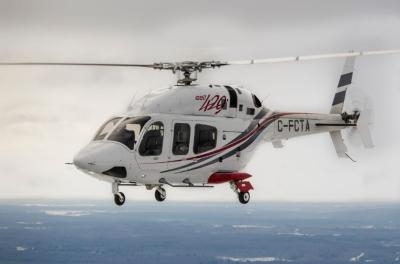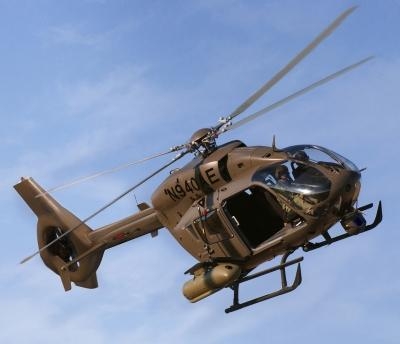Thu, Dec 19, 2013
Civil Market Flourishes, Supports A Broader Range Of Industries
As Department of Defense (DoD) budgets tighten, military services will be forced to spend less on helicopters, according to new analysis released by Frost & Sullivan. The declining budget is also driving trends of upgrading and remanufacturing existing platforms rather than funding new helicopter programs. Conversely, the civil helicopter market has rebounded after the 2008-2009 recession that resulted in a lack of financing to support civil helicopter purchases. The improving U.S. economy has allowed for recapitalization of old aircraft as well as new purchases to support growing demand from industries such as emergency medical services, oil and gas.

Frost & Sullivan finds the DoD spent $12.41 billion on military helicopters in 2012 and estimates this to decrease to $6.70 billion in 2018. The U.S. civil helicopter purchases, on the other hand, generated about $0.89 billion in 2012, and this is estimated to increase to $1.07 by 2020.
The need to replace equipment that is worn from years of constant deployment and harsh environments is the top driver in the military helicopter market, while recapitalizing a fleet with an average age of 24 years is what is driving the U.S. civil helicopter market. "Due to constant use in combat, combat support operations, and humanitarian missions, many existing military airframes will reach their service lives between 2030 and 2040. Some Vietnam Era aircraft, like the CH-47 Chinook and the UH-1 Huey fleets, are nearly 50 years old," said Frost & Sullivan Aerospace and Defense Senior Industry Analyst Michael Blades. "The civil fleet is not nearly as old as the military fleet, but a lack of used aircraft is driving the sales of new platforms."
The most significant challenge the U.S. DoD helicopter market faces is future budget constraints and threat of a prolonged period of sequestration. Likewise, though the market is projected to grow, overall uncertainty in the U.S. economy is restraining the country's civil helicopter market. "Upgrades and remanufactured platforms will continue to dominate spending for the military helicopter market, and new programs will favor modifying commercial-off-the-shelf aircraft rather than developing aircraft from the ground up," observed Blades. "In both the civil and military markets, end users will stress on total life cycle costs rather than acquisition costs."
Therefore, helicopter manufacturers are focusing more on efficiency and ease of maintenance in order to reduce repair costs and logistical tails.

More News
Aero Linx: International Federation of Airworthiness (IFA) We aim to be the most internationally respected independent authority on the subject of Airworthiness. IFA uniquely combi>[...]
Ultrahigh Frequency (UHF) The frequency band between 300 and 3,000 MHz. The bank of radio frequencies used for military air/ground voice communications. In some instances this may >[...]
A Few Questions AND Answers To Help You Get MORE Out of ANN! 1) I forgot my password. How do I find it? 1) Easy... click here and give us your e-mail address--we'll send it to you >[...]
From 2019 (YouTube Edition): Learning To Paint Without Getting Any On Your Hands PPG's Aerospace Coatings Academy is a tool designed to teach everything one needs to know about all>[...]
Also: Sustainable Aircraft Test Put Aside, More Falcon 9 Ops, Wyoming ANG Rescue, Oreo Cookie Into Orbit Joby Aviation has reason to celebrate, recently completing its first full t>[...]
 ANN's Daily Aero-Linx (05.06.25)
ANN's Daily Aero-Linx (05.06.25) ANN's Daily Aero-Term (05.06.25): Ultrahigh Frequency (UHF)
ANN's Daily Aero-Term (05.06.25): Ultrahigh Frequency (UHF) ANN FAQ: Q&A 101
ANN FAQ: Q&A 101 Classic Aero-TV: Virtual Reality Painting--PPG Leverages Technology for Training
Classic Aero-TV: Virtual Reality Painting--PPG Leverages Technology for Training Airborne 05.02.25: Joby Crewed Milestone, Diamond Club, Canadian Pilot Insurance
Airborne 05.02.25: Joby Crewed Milestone, Diamond Club, Canadian Pilot Insurance




